A Return to the Birthplace of the Speed TR
We awoke bright and early in the luxurious confines of our room at the glitzy affordable Shenzhen business hotel. Today was the day we would be headed to the Dahon factory. It was a little too far out of town to be covered on the map of Shenzhen that we had bought during the previous evening’s search for a hotel. From our best estimates it was just slightly outside the scope of the map, at the last stop on Shenzhen’s Metro Line One. Scott remembered from his past travels in Shenzhen that this was at a place called Window of the World, which is a kind of amusement park in Shenzhen.
So we tore ourselves away from the Internet and headed downstairs. The woman at the hotel front desk explained to us that the fastest way to get to the Window of the World would be to take a bus from the stop just a few blocks over. So we hopped on the speed TRs and headed over to the bus stop. Sure enough, one heading for our destination came by and we hopped on.
Traffic was thick, and I found myself frequently glancing down at my watch as the time until our meeting quickly fell from three hours to two to one and a half. Then we were at the Window of the World. From our scrutiny of the Google map, we knew it would be a quick five km wheel up to the factory. We had plenty of time. But as soon as we got on the bikes, we realized that something was wrong. Very wrong.
None of the streets seemed to correlate with our understanding of how they were laid out on the Google map. On top of that, we had put nothing in our stomachs yet save four or five cups of acrid Nescafe. We needed to find this factory, and fast, but if we were going to do that we needed to solve the painful ache in our stomachs and the plummeting blood sugar, which had been mixing poorly with the adrenaline of a navigational misstep. We solved the hunger problem with a few rice balls wrapped in banana leaves and some eggs that had been hard boiled in salty tea.
From there, we headed out once again, wheeling like crazy, but unable to find any evidence of the landmarks we expected to find. Finally, with less than an hour left, we folded up the bikes and threw them in the back of a cab. The cab driver frowned at us when we explained where we wanted to go, but agreed and promptly got back on the highway, pulling into the fast lane. It seemed it was time to call Dahon.
It turns out that in the three years since Scott had last been in Shenzhen, they had added another 40 km of subway to Line One, and we were nowhere near the Dahon factory, which was located a much more significant a distance from the city center than we had believed. We put our Dahon contact, Joan, on the phone with the driver, and she explained to him exactly where to go.
It was not a cheap ride, but we were able to make it to the meeting only 20 minutes late. Joan, and a man who introduced himself as Thomas, greeted us warmly, handing us Dahon VIP tags, and showed us where we could park the bikes.
Both Joan and Thomas were exceedingly gracious. For reasons including the protection of Dahon’s intellectual property we are not able to share pictures from our time in the interior of the factory, but I will do my best to relate our experiences there to you, dear reader, and where possible, we will illustrate with some of Dahon’s own (lawyer approved) photography.
Dahon actually makes a great number of sub-brands, and the nature of the bicycles that fall into these brands is as diverse as can be. While it is true that most of the cycles are folding or collapsible in some way, Dahon has everything from full-size, large-wheeled retro looking racing bikes, to hyper light, super collapsible, futuristic bikes with wheels only 16 inches in diameter. They make everything from extremely affordable bikes, branded exclusively for the Chinese market to the kind of multi-thousand dollar collapsible racing bikes that we saw at Speed Matrix and My Bike Shop in Singapore.
The factory complex is large, and getting only larger. The Shenzhen operation is a cluster of sizable multistory buildings, all covered in small tiles, in the two shades of Dahon green.

Thomas and Joan were kind enough to show us a model for the new factory they are planning to build in China, and which was designed in large part by Dr. Hon himself, founder and namesake of Dahon bicycles.

The more affordable of Dahon’s sub-branded bikes are made from steel rather than aluminum, and the factory is divided around the type of metal used for the frames. We began first in the steel frame section. Here it was, as we found to be the case in most of the factory, quite loud. Men and women wearing matching uniforms were arranged in lines around large welding, bending, and sizing machines. As the people worked, the machines shrieked and squealed.
Each person added only one change to the frame, and then passed the increasingly finished product on to the next person. To absorb the changes in the amount of time each worker took to do his or her job, the frames were placed on large racks, where they awaited manipulation by the next worker.
We walked around, looking at large neatly piled carts, filled with all shapes and sizes of bicycle frames. We watched men and women, welding, punching holes, bending, and checking for consistency as the cycles made their way down the line. At various points in the process, a red-hot frame would be plunged into water with a great hiss, to cool the thing down before passing it on to the next worker.
The aluminum frame section was very similar, though it was obvious that it was a slightly more difficult metal to work with. The machines and procedures on this floor were more intricate, and while the steel frames were a dull matte gray brown, the aluminum frames gleamed with the vibrancy of fresh untreated metal. We continued to walk around, noticing here and there frames for specific models of Dahon cycles that we had seen or even test driven during our time in Singapore.
We moved from the frame-building section on to the chemical treatment section. Here the frames are all attached to a great conveyor rack and sent on a wild ride through a number of different chemical baths, submerging completely, then being hoisted high above us to travel the length of the room (presumably to dry) before returning for a new chemical bath. All quite fascinating.
Painting takes a while, and a fair bit of baking, so we skipped that, heading instead straight to the assembly line. Here they had an honest-to-goodness, Lucy-in-the-Chocolate-Factory-style conveyor belt. Cycles began as freshly painted frames at one end, and piece by piece, they were assembled, all the while never pausing on their steady journey down the belt.
After riding the cycle for so long, in so many different places, I had begun to feel like my bike was something unique, something very few people in the rest of the world had. This is, of course true, but to be here in the factory, watching hinge after hinge get attached to the frame, reflector after reflector being placed on the bike, I began to realize how amazing this operation actually was. My bike was special, but it was also one of many. Each day they were cranking out hundreds and hundreds of bicycles, bicycles I had respect and love for. And all the workers were startlingly serious and professional. People were not joking or listening to music or goofing around. They were focused on placing this screw into that hole and drilling it in, or clipping this plastic piece onto this bit of the handlebar, and clamping it down. There were were craftsmen.

I thought of an argument I had once with a friend after physics class about whether to do something the same way time and time again, and do it perfectly or passionately, was not as much art as to create something once, for the first time. I still am not sure where I stand on that one, but I was arguing the former position, in hopes of exploring how I felt about it. I thought for a moment about being the fellow who attached every right handlebar grip to every Dahon cycle of a particular model. It must be a trip to see one of them go by, and have the thought: I put that grip on that bike. I saw that bike when it was just a chunk of metal in a pile. Incredible.
From there, we headed over to the offices of the Total Quality Team. Here they were testing every component of the bike, to look for weaknesses. We saw front forks being bent and unbent again and again, tires being spun endlessly, chains being stretched. All of it was done by large and terrifying pneumatic machines, which hissed and popped with each flex of a bike component.
They Quality Control folks also showed us the x-ray room in the back, where they placed bicycle components in a large metal chamber and blasted them with x-rays to investigate the properties of the interior of the metal. It was a strikingly impressive laboratory, all dedicated to the investigation and preservation of the fortitude and safety of Dahon’s cycles.
After we left the Quality Control room, we headed up to the showroom. This is a large room where every model of Dahon cycle in on display in a dizzying array.
There are a number of small bar tables in the room, where we were invited to sit while the Dahon team went down to our Speed TRs, replacing any broken parts and tuning the components.

We spent a charming half hour with Joan before we were invited upstairs to the office section of the factory. There we met with some other members of the Dahon factory management and logistics team. We sat for a brief while with them around a large table, drinking ice-cold cans of coffee and then we were invited back downstairs to take a look at the bikes.
They had only looked better once before. And that was after Tan from My Bike Shop in Singapore gave them his twice over. Scott’s bike had, of course, been through the grinder during our misadventures with trucks in Bangkok, so an infusion of fresh parts was especially good for his cycle.
And with that, we bid our new friends at Dahon a fond farewell, and hopped back on the speed TRs. We were not sure exactly how far out of town we currently were, but it was certainly far. It felt unlike anywhere we’d been in China. It was factory land. Everyone we saw on the street was a factory worker. At most of these factories, the workers live in attached apartment complexes. The fact that they live and work in the same place, makes it so that China can never quite achieve the same kind of industrial wasteland that one might find, say, outside Chicago.
What I’m trying to say, dear reader, is that we needed to wheel this zone a little before we began tackling the task of getting back to our hotel. And this we did. With the bikes freshly tuned, wheels and brakes in alignment, the wheeling felt great. I would not describe this place as wheeling friendly though. Despite the fact that we saw many people on bicycles headed out for an after work beer or running errands, the roads were designed with cars in mind, and cars only. The sidewalks were crammed with people, so cyclists did their best to stick to the side of the road. There was no designated lane and the right side of the road had also been emergency designated as the lane for giant trucks transporting factory supplies or freshly made goods bound for the market. We did our best to signal our intent, and worked our way along, gawking at the endless expanse of factories around us. The factory land was situated on a large flat plain, punctuated by largish mounds of shrubbery enshrouded rock. The craggy green mounds rose out of the factory-related smog like gum-drop mountains out of the fabled south China mists. Meanwhile the sun was sinking low, spreading in orange and gold across the sky. People bustled and machines churned. Hawkers stood on the street corners next to large piles of watermelons, or in front of rugs on which a myriad of small electronic devices were spread, and called the nature of their wares into the torrent of humans. The air was thick with soot. It felt at once both a new and very ancient place. We purchased some 20-cent bottles of water and kept wheeling.
Eventually we passed one of the stops we had traversed on the previous day’s train ride from Guangzhou. Here we stopped to scrutinize a map. While we were scrutinizing, two beautiful Chinese women came up and started speaking English to us. While becoming a more common occurrence day by day, this is still a rare treat (at least in the parts of China AsiaWheeling prefers to frequent). The women helped us to find a couple of bus lines that would help us to get back to the city, but by the time we had decided on a line, the traffic around us had ground to a halt. With the choice between sitting on a bus in gridlock traffic and wheeling staring us in the face, we made the obvious choice.
We pulled now onto the sidewalk and began pedaling. We were changing neighborhoods now, and with the change, pedestrian traffic was thinning out. We were riding on a sparsely trafficked, but wide sidewalk, whipping by the stalled drivers to our left, and doing our best to dodge the many low-hanging branches that threatened to knock us off our bikes in the post-sunset gray light, when suddenly we realized that our blood sugar had fallen to a near record low. This also easily explained away the twisted and stressed nature of our recent conversation. We called a waypoint at the next gas station, and went inside it to find a very American convenience store, where some cartons of sweetened Chinese milk and a few Mars Incorporated products brought us back into reality.
When we exited the gas station, we found traffic moving again, so we hopped the next bus. On board, we whiled away our time chatting with a hair dryer salesman on his way home from work. He told us excitedly about his upcoming trip to Las Vegas for a hair products trade show, and we did our best to share his enthusiasm.
When the bus reached the city center, we hopped off and started wheeling in search of food.
We ended up finding it not many blocks away when we happened upon a street of Chinese Muslim restaurants. We selected a particularly delicious looking Uyghur joint, and headed in. We sat down at a table and watched in hungry astonishment as the fellow across from us ordered a giant feast, and then proceeded to nibble maybe a quarter of it, leaving enough food on the table for both Scott and me to stuff ourselves silly. I was in favor of eating and asking for forgiveness, but we decided after some debate, to ask the staff whether we might just add his food to our own. This, it seems, was against the rules. I was still able to grab one piece of chicken before the servers cleared the feast. The chicken was amazing, and only made it all the harder to wait for our own food to arrive. But when it did, it was well worth the wait.
We had lamb and yogurt, and that delightful Uyghur bread, Neng. We were even able to order a couple of our favorite Xinjiang brews, something which we had been unable to find in China up until that point. It was a fine meal, and a fine day.
We now had only to return to the luxurious confines of our hotel, crank up the air conditioning and feast relentlessly on the speedy Internet. Ah, China.




















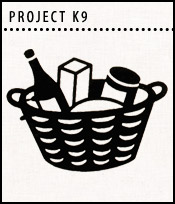
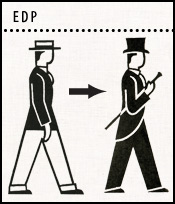
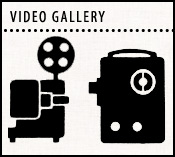
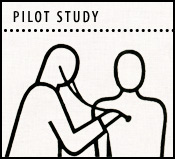
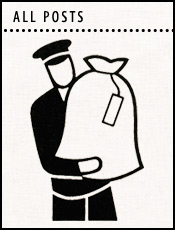
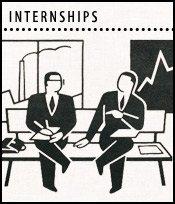




Comments
Incredible. How long does it take to make a bike? I presume Dahon owns the manufacturing plant? Does Dahon own the Chinese branded bikes you speak of or are they likely a customer order?